Thank you for calling the Alcor Life Extension Foundation. This call may be recorded. If you are reporting the death or the near death of an Alcor member, please press two now.”
Anti-aging research is the next big thing in healthcare. Companies such as Calico and Human Longevity, both based in California, are pioneering genetic and pharmacological techniques to reduce the ravages of time on the human body. At the fringes of science, Alcor, an Arizona-based nonprofit, vitrifies dead people in hopes of reviving them at a later date, while Russian internet mogul Dmitry Itskov seeks to create cybernetic bodies to host human consciousness.
Aging “is one of the great mysteries of biology,” says Dr. Thomas Rando, director of the Glenn Center for the Biology of Aging at Stanford University. “If we begin to understand what the process of decline associated with aging is, and if we can slow that by targeting those mechanisms, then potentially one could alter its course.”

The idea that death can be forestalled by a magical substance, usually the mystical waters of the Fountain of Youth, dates back at least to the Greek historian Herodotus in the 5th century BC. The “elixir of life” also appears in ancient Chinese and Indian legends and in alchemical texts from medieval Europe. The Spanish explorer Juan Ponce de León was thought to have quested throughout the New World in the 16th century in search of the fabled Fountain of Youth.
As living standards improved in the 20th century, the quest for eternal life was subsumed into modern medicine’s fight against infectious disease. The average American’s life expectancy rose from 70 in 1960 to almost 79 in 2012, according to the World Bank. Yet little attention was paid to extending good health into old age. Rather than dying at 70, people now live to be far older, but often with a lesser quality of life.
Serious anti-aging research only started about a decade ago. “Improving health is the goal, and longevity might be the consequence of the improvement,” says Dr. Joon Yun, president of hedge fund Palo Alto Investors and sponsor of the Palo Alto Longevity Prize, which funds anti-aging research.

At the time, scientists interested in treating or preventing the impairments of aging were often seen as either out of touch or just plain kooky. “I remember talking to some people from [the healthcare company] Roche about 15 years ago about this notion of drugs that might target the aging process,” Rando says. “They thought that was ridiculous.”
Two trends have since proved to be the foundation for longevity research: new discoveries in genomics and the ability to share information over the internet. But for the most part, longevity research has not been funded by conventional research institutes or biotech companies—as great as the payoff could be, there’s little to no short-term return. Instead, some of the world’s wealthiest and most visible entrepreneurs have taken up the challenge. Some have a background in medicine, but most of these investors come from the worlds of technology and engineering. That makes more than just financial sense. “It’s clear now that biology is an engineering project, whereas before that wasn’t so obvious,” says Sonia Arrison, author of 100 Plus, a book about the effects of superannuation.
The prospects are encouraging: Participants in longevity research say they expect rapid gains in a matter of years and decades. It’s not unreasonable to think that today’s children could regularly crack 100 or even 120.
“It’s the holy grail of healthcare, extending a human lifespan,” says Dr. Peter Diamandis, cofounder of Human Longevity and CEO of the XPrize Foundation, which awards financial gifts for scientific and technological advancements. Yet there’s a downside to the prospect of extreme longevity: If people don’t maintain good health into their senescence, longevity could place enormous strain on economies and societies.
And, of course, philosophical questions abound. What do highly successful people like Sergey Brin, Larry Ellison or Peter Thiel—or anyone else for that matter—gain by living a few years more? How will added longevity change age-old notions of the phases of life? Will longevity become, even more than it already is, a gift largely conferred on the wealthy?
The research will not pause to answer these questions. Here are six successful entrepreneurs who have turned their energy—and their wealth—to the project of longer life.

Dr. Joon Yun
Managing Partner and President, Palo Alto Investors Sponsor, Palo Alto Longevity Prize
“Nature endowed the greatest healthcare system in the world: It’s called our bodies,” Yun says, explaining why he endowed the $1 million Palo Alto Longevity Prize. “Our body is an incredible system that is able to self-heal.” Yet beginning in middle age, “it is more vulnerable to the slings and arrows of life.”
Yun, 47, graduated from Harvard with a degree in evolutionary biology before getting his MD at Duke and joining Stanford’s clinical faculty. He signed on with Palo Alto Investors, a $1 billion healthcare investment fund, in 1998. His goal? To extend what he calls “healthspan”—our healthy years before we begin to decline—into middle and old age; if longer life is a consequence, so much the better.
Under the current healthcare regime, Yun says, “we have been helping people live longer and stronger lives, but the trajectory is unsustainable. This idea of helping people live longer without solving the underlying cause of aging lends itself to exponential increases in healthcare spending.
“This is an area of relative market dysfunction,” he adds. Biotech companies and healthcare providers are incentivized to treat diseases, not prevent them. Compounding the problem, increased healthspan is hard to measure; it requires long time spans, discouraging companies with short-term goals from pursuing it.
Yun created the Longevity Prize to incentivize research in two areas: restoration of the body’s ability to repair and maintain itself, and extending the lifespan of a mammal by 50 percent. Preventing people from getting sick as they age, Yun says, is about “getting a lot more healthcare value for a lot less money.”
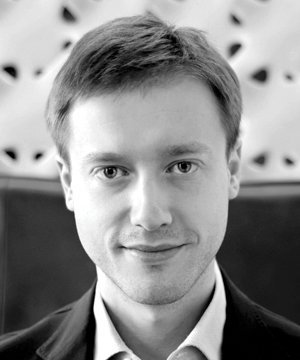
Dmitry Itskov
Founder, New Media Stars, 2045 Initiative
Itskov’s Facebook page displays a piece of promotional art from James Cameron’s 2009 movie, Avatar, with Itskov’s face pasted over it. The movie was about futuristic soldiers who transfer their minds to artificial bodies. Itskov, who launched Russian internet company New Media Stars in 1999, must have really liked Avatar , because in 2011 he founded the 2045 Initiative, a foundation that aims to transfer human consciousness into cybernetic bodies.
Itskov, 34, has plotted the evolution of humanity from carbon-based life form to liberated machine sentience. By 2020, according to his website, he foresees the “widespread use of affordable android ‘avatars’ controlled by a ‘brain-computer’ interface.” By 2025, an “autonomous life-support system for the human brain linked to a robot ‘avatar’ will save people whose body is completely worn out.” By 2045, “substance-independent minds will receive new bodies with capacities far exceeding those of ordinary humans.”
To get there, Itskov is investing in startups creating avatar technology, while the 2045 Initiative is designed to coordinate and support scientific advancement in the field.
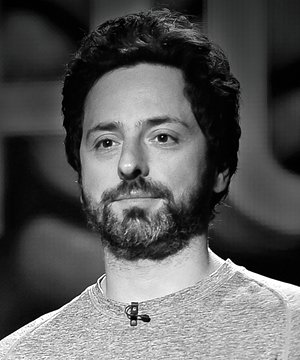
Sergey Brin
Co-Founder, Google backer, Calico
On January 14, 2013, Brin posted on his Google+ page a photo of jellyfish suspended in the limpid water of a lake in Palau; because some jellyfish do not appear to die, they have become a focus of aging research. “No place in the world has made me consider my place in the universe like Jellyfish Lake,” Brin wrote. “Millions of creatures all drifting seemingly aimlessly, searching for light, for the energy to spawn so generations of their offspring may do the same years later. I take a small breath, sink toward the bottom, watching them in wonder and think, are we really so different ?”
This kind of thinking led Brin and Larry Page, his Google cofounder, to launch Calico in 2013 with money from the company’s venture capital arm, Google Ventures. (Brin is said to be considerably more involved. One possible reason why: Brin, 41, has a genetic mutation, LRRK2, which is thought to substantially increase the probability of developing Parkinson’s disease.) Calico’s stated goal is “to harness advanced technologies to increase our understanding of the biology that controls lifespan.” The company announced a $1.5 billion coinvestment with pharmaceutical company AbbVie in September 2014 to construct an R&D lab “focused on aging and age-related diseases, including neurodegeneration and cancer.”
Calico’s approach is twofold. In the short term, the company is developing drugs to treat age-related diseases; in the long run, Calico hopes to gain a larger, more holistic understanding of why humans age and to fight aging using pharmacology.
Calico is in a “unique situation in being able to invest in basic aging research without having to turn a profit for a long time,” Stanford’s Rando says. “So there’s the potential there to do something really big.”
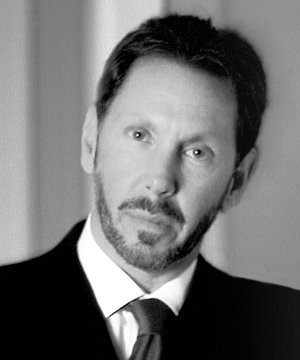
Larry Ellison
Executive Chairman and CTO, Oracle Founder, Ellison Medical Foundation
On January 14, 2013, Brin posted on his Google+ page a photo of jellyfish suspended in the limpid water of a lake in Palau; because some jellyfish do not appear to die, they have become a focus of aging research. “No place in the world has made me consider my place in the universe like Jellyfish Lake,” Brin wrote. “Millions of creatures all drifting seemingly aimlessly, searching for light, for the energy to spawn so generations of their offspring may do the same years later. I take a small breath, sink toward the bottom, watching them in wonder and think, are we really so different ?”
This kind of thinking led Brin and Larry Page, his Google cofounder, to launch Calico in 2013 with money from the company’s venture capital arm, Google Ventures. (Brin is said to be considerably more involved. One possible reason why: Brin, 41, has a genetic mutation, LRRK2, which is thought to substantially increase the probability of developing Parkinson’s disease.) Calico’s stated goal is “to harness advanced technologies to increase our understanding of the biology that controls lifespan.” The company announced a $1.5 billion coinvestment with pharmaceutical company AbbVie in September 2014 to construct an R&D lab “focused on aging and age-related diseases, including neurodegeneration and cancer.”
Calico’s approach is twofold. In the short term, the company is developing drugs to treat age-related diseases; in the long run, Calico hopes to gain a larger, more holistic understanding of why humans age and to fight aging using pharmacology.
Calico is in a “unique situation in being able to invest in basic aging research without having to turn a profit for a long time,” Stanford’s Rando says. “So there’s the potential there to do something really big.”
Ellison, one of the most intriguing figures in Silicon Valley, gave more than $350 million for anti-aging research from 1997 to 2015, making him by far one of the largest sponsors of the field. With no tangible results in sight, he stopped making new grants in 2013, and has never publicly explained why. The foundation, however, still operates.
When Ellison, now 70, established the foundation, “there wasn’t enough traction to allow any success in the field,” says Dr. Kevin Lee, executive director of the Ellison Medical Foundation. The research grants provided by the foundation subsequently “defined this as a problem that wasn’t being addressed.” Ellison’s support, Lee says, helped move anti-aging research from the scientific fringe to the mainstream. “The foundation’s timing was perfect in providing the seeding for this field to develop.”
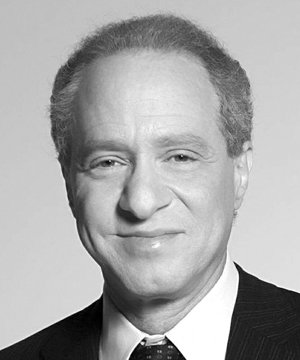
Ray Kurzweil
Director of Engineering, Google Co-Founder, Singularity University
Kurzweil is the eccentric uncle of Silicon Valley. He invented the CCD flatbed scanner and a machine that reads text to the blind. The recipient of 20 honorary doctorates, he cofounded Singularity University in Silicon Valley in 2007. Its mission: to become the epicenter of theorizing about the “singularity,” the moment when artificial intelligence will surpass human minds, allegedly leading to a tech utopia. Kurzweil believes that anti-aging research, nutrition and nanotechnology, among other things, will “enable humans to live indefinitely,” according to a note he wrote for the Methuselah Foundation website.
A major donor to the research-oriented Methuselah Foundation, Kurzweil, 67, is also a member of the Alcor Life Extension Foundation, a nonprofit that cryonically preserves people when they die in the hope of one day bringing them back to life.
“What’s the harm in rationalizing death?” Kurzweil wrote in 2004. “The harm is that in rationalizing something that is tragic, we fail to take the urgent action needed to avoid the tragedy.” As human lifespans grow, Kurzweil adds, “we are also going to merge with our technology and expand our cognitive and emotional capabilities, as well as the depth and richness of our intellectual, relational, artistic, sexual and emotional experiences many-fold.”
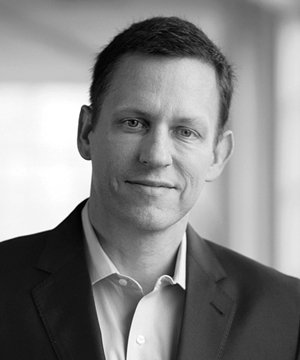
Peter Thiel
Co-Founder, PayPal, Palantir Technologies Backer, SENS Research Foundation, the Methuselah Foundation
There are three approaches to death, Thiel recently told the Guardian: “You can accept it, you can deny it or you can fight it. I think our society is dominated by people who are into denial or acceptance, and I prefer to fight it.”
Thiel, 47, has said that he plans to live to be 120. He runs, takes human growth hormone, adheres to a Paleo diet and eschews sugar. He has also donated at least $6 million to the SENS Research Foundation and the Methuselah Foundation, both longevity-research projects started by a Cambridge-educated biologist named Aubrey de Grey.
“There’s 100,000 people or more dying every single day of aging or age-related causes,” de Grey says. “Mostly dying after a long period of decline and dependence and disease and general misery. So, you know, every single day that I bring the defeat of aging forward—which I probably do about once a month—I’m saving 100,000 lives. That’s pretty motivating.”
Thiel said in a Reddit “Ask Me Anything” session last year that he prefers to invest in medical and research ventures when they resemble “software companies—a group of really committed founders with a clear vision of what they’re trying to do.”
“The key thing about Peter Thiel is he has a high threshold of reputation tolerance,” the Methuselah Foundation’s CEO, David Gobel, says. “There is a very large number of millionaires and billionaires who are legitimately terrified of being pilloried and burned at the stake in the media, because it’s happened to them and it has consequences… I think he’s made a rational calculation that his reputation is not worth as much as the potential.”
Two approaches
Some longevity organizations focus on bringing people back to life, others on keeping you from dying in the first place.
Human Longevity
A collaboration between cofounders Dr. Peter Diamandis, Dr. Robert Hariri and pioneering geneticist Dr. Craig Venter (see Q&A with Craig Venter), HLI may be the only serious competitor to Google Ventures’ Calico. The company focuses on extending life through genomics and stem cell therapies, and specifically targets cardiovascular and neurodegenerative diseases and cancer.
HLI is “building the largest genome-sequencing facility on the planet,” Diamandis says. It will also compile microbiome, MRI and metabolism data. “It’s just a massive amount of data that would have been impossible to manipulate, fathom or mine even just five years ago,” Diamandis adds. “We’re targeting millions of data sets from millions of individuals from around the world, from across ages, from across disease groups and mining that to extract knowledge and information.”
In January, the company announced a gene-sequencing agreement with biotech giant Genentech, which hopes to use Human Longevity’s findings to speed the discovery of new drugs.
Alcor life extension foundation
Alcor vitrifies people after they die in the hopes of bringing them back to life in the future. Members’ bodies are infused with a “cryoprotective solution, a kind of medical antifreeze” after they die, Alcor CEO Max More says, before being cooled and stored in liquid nitrogen.
The cost? At least $200,000 for the entire body or $80,000 for just the brain, and it can be paid using life insurance benefits. According to More, many wealthy members set up a trust so they have a nest egg if and when they wake up.

Two Approaches
SOME LONGEVITY ORGANIZATIONS FOCUS ON BRINGING PEOPLE BACK TO LIFE, OTHERS ON KEEPING YOU FROM DYING IN THE FIRST PLACE.
01. Human Longevity, INC.
A collaboration between cofounders Dr. Peter Diamandis, Dr. Robert Hariri and pioneering geneticist Dr. Craig Venter, HLI may be the only serious competitor to Google Ventures’ Calico. The company focuses on extending life through genomics and stem cell therapies, and specifically targets cardiovascular and neurodegenerative diseases and cancer.HLI is “building the largest genome-sequencing facility on the planet,” Diamandis says. It will also compile microbiome, MRI and metabolism data. “It’s just a massive amount of data that would have been impossible to manipulate, fathom or mine even just five years ago,” Diamandis adds. “We’re targeting millions of data sets from millions of individuals from around the world,from across ages, from across disease groups and mining that to extract knowledge and information.”In January, the company announced a gene-sequencing agreement with biotech giant Genentech, which hopes to useHuman Longevity’s findings to speed the discovery of new drugs.
02. Alcor Life Extension Foundation
Alcor vitrifies people after they die in the hopes of bringing them back to life in the future. Members’ bodies are infused with a “cryoprotective solution, a kind of medical antifreeze” after they die,Alcor CEO Max More says, before being cooled and stored in liquid nitrogen.The cost? At least $200,000 for the entire body or $80,000 for just the brain, and it can be paid using life insurance benefits. According to More,many wealthy members set up a trust so they have a nest egg if and when they wake up.






